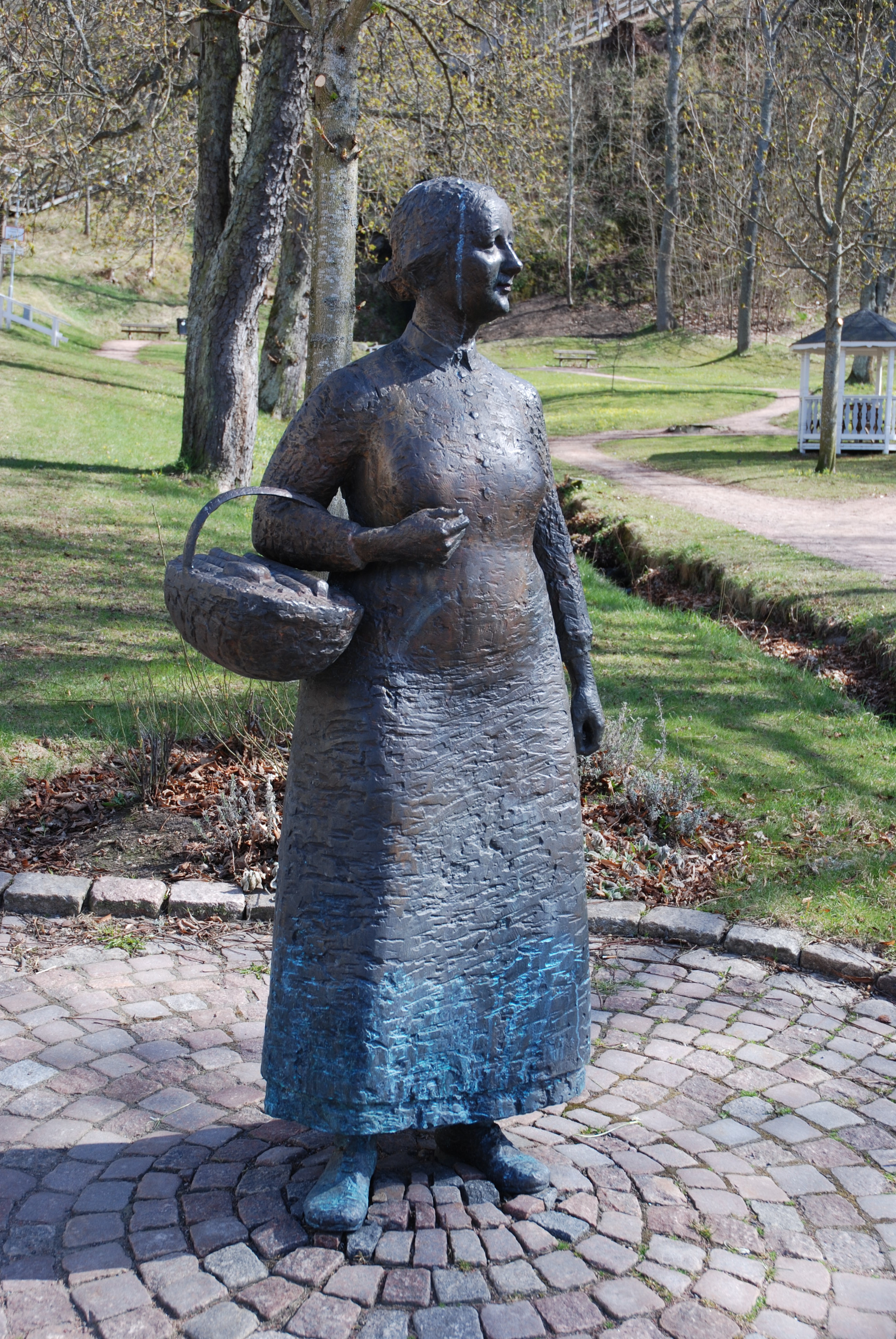Amalia Eriksson on:
[Wikipedia]
[Google]
[Amazon]
 Amalia Elisabeth Eriksson,
Amalia Elisabeth Eriksson,
née
A birth name is the name of a person given upon birth. The term may be applied to the surname, the given name, or the entire name. Where births are required to be officially registered, the entire name entered onto a birth certificate or birth re ...
Lundström (25 November 1824 – 19 January 1923), was a Swedish businesswoman, known as the inventor of the ''Polkagris
Polkagris (plural: ''polkagrisar'') is a Swedish stick candy that was invented in 1859 by Amalia Eriksson in the town of Gränna, Sweden. It remains a well-known albeit old-fashioned candy in Sweden, often sold at fairs, Christmas markets, and t ...
'', a type of candy stick known to have inspired the candy cane, which she invented in Gränna
Gränna () is a locality in Jönköping Municipality, Jönköping County, Sweden with 2,665 inhabitants in 2018. Founded in 1652 by Count Per Brahe, it is in Småland on the eastern shores of the lake Vättern, about 40 km north of Jönköpin ...
, Sweden.
Life
Amalia Eriksson was born inJönköping
Jönköping (, ) is a city in southern Sweden with 112,766 inhabitants (2022). Jönköping is situated on the southern shore of Sweden's second largest lake, Vättern, in the province of Småland.
The city is the seat of Jönköping Municipali ...
, the daughter of farrier
A farrier is a specialist in equine hoof care, including the trimming and balancing of horses' hooves and the placing of shoes on their hooves, if necessary. A farrier combines some blacksmith's skills (fabricating, adapting, and adjus ...
Jonas Lundström and maid Katarina Hagen Andersdotter in the year of 1824. When she was 10, she lost her parents and all her siblings to infectious diseases, including the cholera epidemic. Amalia started working as a maidservant, following her mother’s footsteps. In 1855, she moved to Brahegatan 2, Gränna in the company of the Röding sisters, the family she was working for, which later became a hotel named after Amalia. In 1857, she married tailor Anders Eriksson. After a year of marriage, Amalia gave birth to twins in September, where only one survived and the other was a stillborn. The surviving newborn girl was named Ida. Just a few days later, her husband also died of dysentery and she became a widow with a newborn daughter. In 1859, Amalia maintained a business selling Polkagris until she died. Amalia Eriksson died in Gränna at 99 years old and is buried at the Gränna cemetery along with her daughter Ida.
Career & Impact
During a time when Swedish law did not generally allow women to operate a business, Amalia applied for a license in 1859 to run a bakery and sell Polkagris. The Swedish law did allow for women to work with their hands in certain exceptional cases according to a royal proclamation. Due to her dire circumstances, the magistrate of Gränna granted her the license on January 10, 1859. The story goes that Amalia made her Polkagris to alleviate some of the suffering her daughter faced being sick from the cold. Although it is unclear if she was the one who truly created the candy, she was the first person to produce it to sell as part of her business. Amalia developed a secret recipe with peppermint oil, sugar, water, and other ingredients that twisted red and white together in the form of small cushions and sticks. She sold this innovation at her bakery. Her Polkagris started gaining enough popularity that she stopped selling bread and focused just on her business of sweets, which allowed her to also buy the house at Brahegatan 2 from the family she used to work for. The popularity of Polkagris spread all throughout Sweden thatCrown Prince Gustaf Adolf
Gustaf VI Adolf (Oscar Fredrik Wilhelm Olaf Gustaf Adolf; 11 November 1882 – 15 September 1973) was King of Sweden from 29 October 1950 until his death in 1973. He was the eldest son of Gustaf V and his wife, Victoria of Baden. Before Gustaf Ado ...
and his wife visited in 1915 to buy some sweets. Amalia was able to export her candy to different countries, including the United States. She became one of Gränna’s most influential and wealthiest people. After her death, her secret recipe was revealed and Ida continued the Polkagris business until 1945, when the business was spread through multiple people. “Äkta Gränna polkagris” is Gränna’s strongest trademark which only Polkagris made in Gränna can get. Even now, around 10 million Polkagris sticks of the original flavor and other flavors are made there each year, inviting tourists from all around the world. In Gränna, a statue of Amalia Eriksson stands in Södra Park in her honor, her home and workshop was turned into a hotel, and she also has an ice cream parlor named after her.
References
* * * ''Änkan som är polkagrisens moder''. Företagsamheten.se, Om svenska uppfinnare, entreprenörer och deras företag. * Alexandra Selivanova. ”Amalia Eriksson”. Uppfinningar & kreativitet; Svenska uppfinnare. Tekniska Museet. Läst 15 juli 2014.Further reading
* {{DEFAULTSORT:Eriksson, Amalia 1824 births 1923 deaths 19th-century Swedish businesswomen 19th-century Swedish inventors Women inventors People from Jönköping